In an effort to create a deeper understanding of Ildefons Cerdá’s connection to the Utopian Socialist movement this research focused around the ways that Cerda’s proposal of the Eixample was influenced and maybe even guided by a political agenda.
By researching the roots of Utopian Socialism and how it is deeply connected to the French Revolution it was possible to assess that it is a movement whose main political preoccupation was the struggle of the working class. In contrsast with the Scientific Socialism that also started after the French Revolution, the Utopian Socialism has been criticised for it’s inability during the years to focus on the practilaties of its proposals. Cerda was first known to be affiliated with the Utopian Socialist movement around the time he had finished his Engineering Studies in Madrid and his first influencer was Etienne Cabet.
By reading Cerda’s General Tome of Urbanisation it was evident that he had indeed a specific interest for the working class. This was shown through his intensive cataloguing of the civil status of Barcelona’s working class.
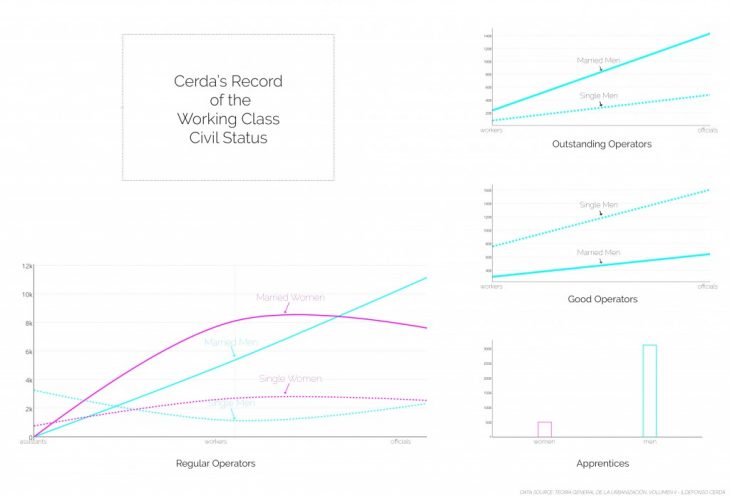
In the same book, Cerda was also focusing on cataloguing the area that corresponded to the citizens of the city since he had an interest for the physiology of the city. The reason for this was mainly a series of recent cholera outbreaks that had hit Barcelona at the time something that had led him to create an extensive catalogue of the citizen’s death rates.
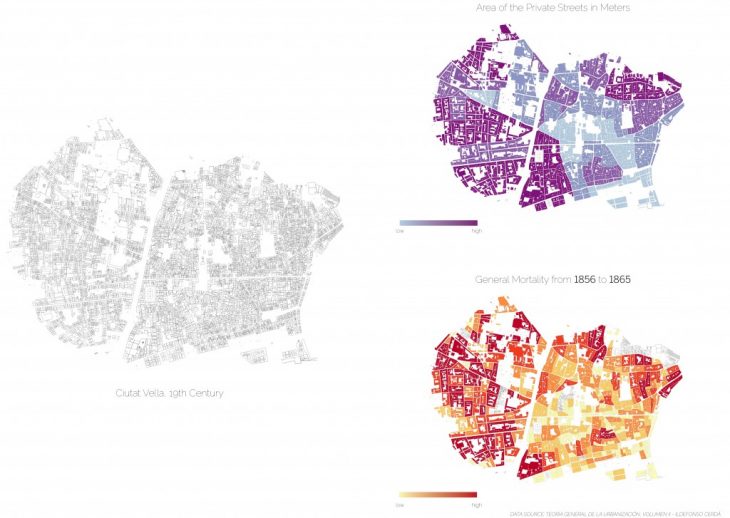
It is evident from the tables that he created that at some point in his research Cerdá was creating connections between them, especially trying to show that one of the main reasons that more people were dying in the city was a lock of an even distribution of space. By isolating 11 neighbourhoods he was able to show that there is an inverse relation between the Area that corresponded to 100 citizens and the Annual Death rates of each neighbourhood.
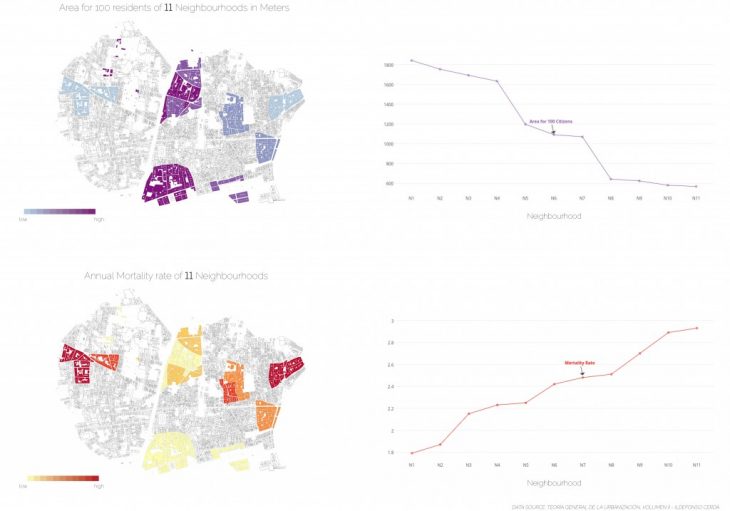
Interestingly, he noticed an anomaly between 3 neighbourhoods that had apparently the same amount of Area and yet the mortality rates were bigger in some of the areas and smaller in others. It was at this point that Cerda stated in the book that he believed that the reason for this anomaly was that the extra deaths were caused because of social inequality that characterised those 3 neighbourhoods.
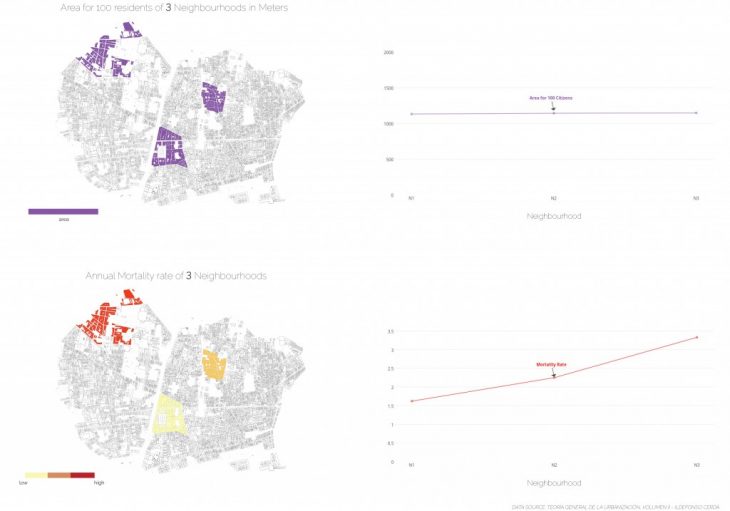
Therefore, by putting together Cerda’s catalogues of the annual mortality rates as well as his catalogues of all the various facilities of Barcelona, I was able to show that there are some strong indications that Cerdá was right. After visualising Cerda’s tables for 2 out of the 3 neighbourhoods in QGIS, it was obvious that even though most of the facilities that surrounded the blocks were the same, there were also some strong differences. Namely, that the 1st block is surrounded by multi-purposed facilities, such as public education facilities, hospitals, retirement homes and orphanages, whereas the 2nd block is mainly surrounded by mansions.
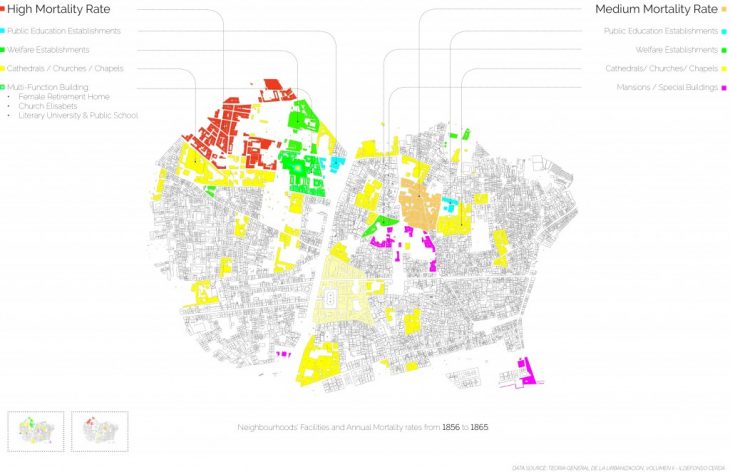
After this visualisation a hypothesis was formed that Cerdá’s proposal for the Eixample was not just a proposal that reflected the need for Greener City, for Pedestrianization or for Military Readiness, but instead it also reflected his vision for a city that was based on Social Equality.
Cerda’s Utopia is a project of Iaac, Institute for Advanced Architecture of Catalonia at Master in City and Technogy in 2016/2017 by:
Students: Alex Mademo
Faculty: Vicente Guallart, Marta Mila, Andre Resende